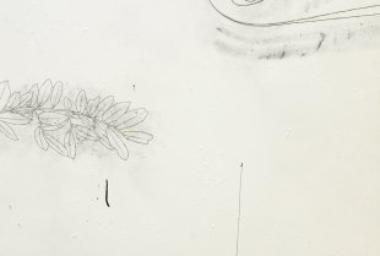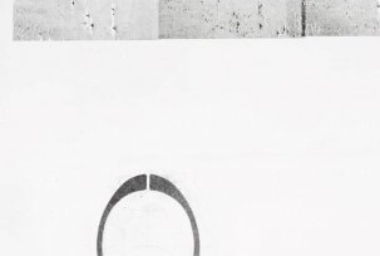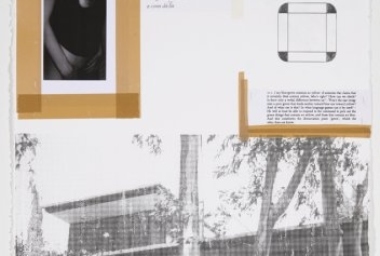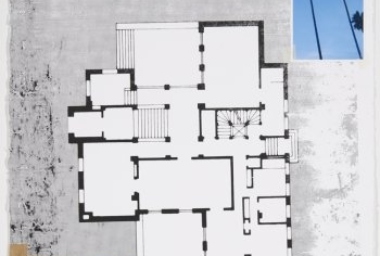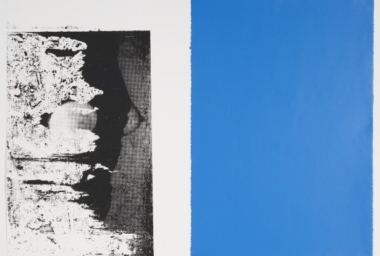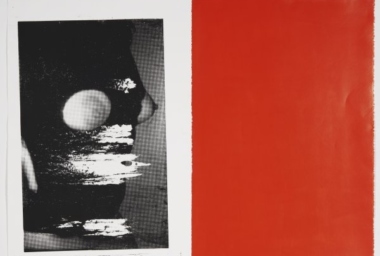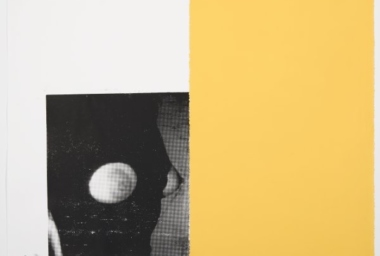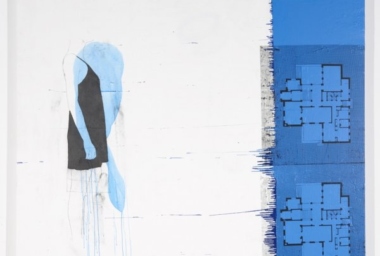We are pleased to present Remarks on Colour 3, by Portuguese artist Julião Sarmento. After his retrospective in 2009 at the Estação Pinacoteca in São Paulo, Julião is returning to the city with a new series of paintings and collages in which color plays a leading role.
The exhibition’s title refers to the book Remarks on Colour by Ludwig Wittgenstein, a fragmented collection of notes in which the author raises philosophical questions about color. Although color previously played a relatively shy role in Sarmento’s work, it now takes center stage and creates tensions and displacements on the pictorial surface. The fields of color dialogue with the texts and images, and arise as a further signifier in the interplays of language proposed by the artist.
Sarmento has developed a visual discourse that explores concepts of memory, transgression, seduction and desire. His works are full of images of gestures, women’s bodies, fragments of texts and architectural plans, all in free association. The paintings and drawings do not close on a single meaning, but rather contain fields of signification that reverberate on each other.
In Silverlake Yellow Neutra, the largest canvas in the exhibition, the image of the celebrated modernist house by Richard Neutra is applied by silkscreen on a white plaster background. An enormous yellow field covers the black-and-white image. In a maneuver that disorients the perspective, there are paint runs that extend horizontally across the canvas, indicating that the artist rotated the painting while making it. These paint runs also appear in Wittgenstein Blue, where a female figure and architectural floor plans appear overlain by two different tones of blue.
In the artist’s new series of collages, Wittgenstein’s notoriously fragmented philosophical passages on color are stuck onto the paper with tape, on top of apparently disconnected photographs and silkscreened images of the same modernist house, of faces and female bodies, as well as the character in the video R.O.C., projected on the gallery’s second floor. In R.O.C., and actress reads the forty one fragments of Wittgenstein’s book one by one while slowly removing her clothing, then sits down and looks at the viewer. Among the paintings, collages and the video, Sarmento creates a labyrinth of references, with some visual responses to the philosopher’s thinking.
Julião Sarmento was born in Lisbon, in 1948. He lives and works in Estoril, Portugal. He has shown his work in various important art centers, including CAC, Málaga; Parrish Art Museum, Southampton, New York (2011); Tate Modern, London (2010–2011); Estação Pinacoteca, São Paulo (2009); Centro José Guerrero, Granada (2008); Fundación Botín, Santander and MEIAC, Badajoz (2006); Museum Dhondt-Dhaenens, Deurle, Belgium (2005); and Van Abbemuseum, Eindhoven, The Netherlands (2004).
Julião Sarmento nasceu em Lisboa, em 1948. Mora e trabalha em Estoril, Portugal. Já exibiu seu trabalho em centros de arte como: CAC, Málaga; The Parrish Art Museum, Southampton, New York (2011); Tate Modern, London (2010-2011); Estação Pinacoteca, São Paulo (2009); Centro José Guerrero, Granada (2008); Fundación Botín, Santander e MEIAC, Badajoz (2006); Museum Dhondt-Dhaenens, Deurle, Belgium (2005) e Van Abbemuseum, Eindhoven, The Netherlands (2004) entre muitos outros.
Images
1/9
White Breasts Plant, 2011
Mixed media
195 x 125 x 6 cm
JS10039
White Bulb Ellipsoid, 2011
Mixed media
195 x 125 x 6 cm
JS10040
111. Neutra Yellow, 2011
Mixed media
100 x 71.5 cm
JS10051
182. Wittgenstein Blue, 2011
Mixed media
100 x 71.5 cm
JS10049
Blue Breasts, 2011
Aqueous enamel and silkscreen on paper
112 x 155 cm
JS10047
Red Breasts, 2011
Aqueous enamel and silkscreen on paper
112 x 155 cm
JS10046
Yellow Breasts, 2011
Aqueous enamel and silkscreen on paper
112 x 155 cm
JS10045
Silverlake Yellow Neutra, 2011
Mixed media
195 x 185 x 6 cm
JS10041
JULIAO SARMENTO
Wittgenstein Blue Disappearing Act, 2011
mixed media
195 x 220 x 6 cm
JS10042
